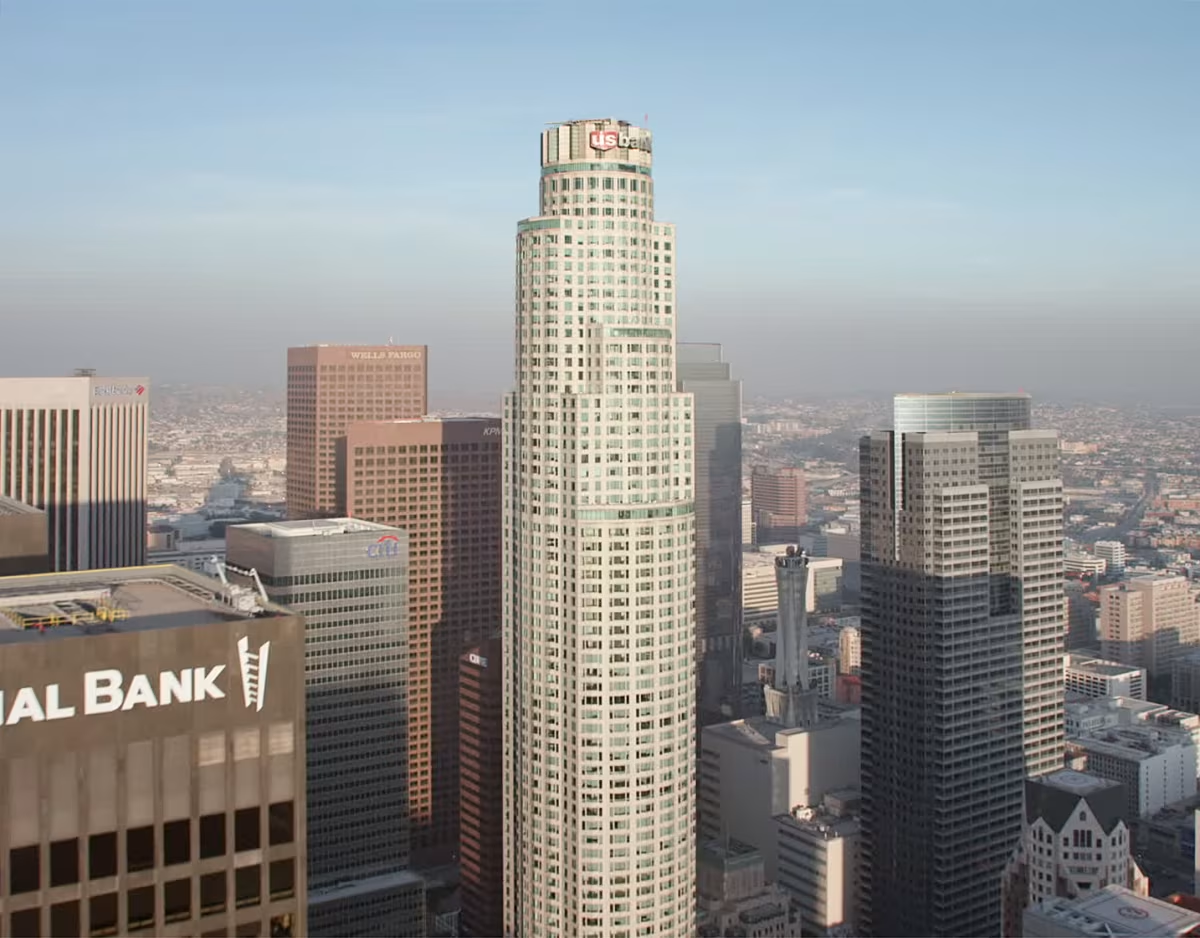200 West Street Building vs U.S. Bank Tower


Comparing the 200 West Street Building and the U.S. Bank Tower is compelling because they were both designed by Pei Cobb Freed & Partners, yet they stand in different cities (New York, NY and Los Angeles, CA), and were completed over two decades apart.
What this will allow us to see, is how the same firm's approach adapted to different places in different periods of time.
Height & Size
The U.S. Bank Tower is clearly the larger tower of the two, both in terms of height and number of floors. It rises to 1017ft (310m) with 73 floors above ground, while the 200 West Street Building reaches 741ft (226m) with 45 floors above ground.
Despite being taller and having more floors, U.S. Bank Tower has less total built-up area than 200 West Street Building.
Of course, each project may have faced different briefs or regulatory constraints, which we don't really know about and could also explain the outcome.
Architectural Style
The 200 West Street Building was designed in the Contemporary style, while the U.S. Bank Tower reflects the principles of Postmodernism.
At the time of their completion, both styles were well established. This makes the comparison especially interesting, because both buildings represent a dominant aesthetic at a particular point in time.Built 21 years apart (2010 vs 1989), these two buildings are a perfect example of how different architectural styles have shaped the architectural landscape of our cities over time.
Uses
Both the 200 West Street Building and the U.S. Bank Tower were designed to serve as commercial towers, and that has remained their main use since their completion, serving similar roles in the urban fabric.
The U.S. Bank Tower also provides 1396 parking spaces.
Structure & Facade
The two towers rely on different structural systems, reflecting distinct engineering strategies.
The 200 West Street Building uses a Trussed Frame structural system, which uses diagonal bracing in addition to beams and columns for stability, while the U.S. Bank Tower uses a Framed Tube In Tube system, that combines a strong central core with a perimeter tube of columns.
Yet, when it comes to their facade, they both employed the same solution, a Curtain Wall facade.
A curtain wall is a non-load-bearing facade hung from the structural frame. It is anchored to floor slabs and transfers only its own weight and wind loads, allowing for sleek, glassy exteriors.
| 200 West Street Building | U.S. Bank Tower | |
|---|---|---|
| Pei Cobb Freed & Partners | Architect | Pei Cobb Freed & Partners |
| 2005 | Construction Started | 1987 |
| 2010 | Year Completed | 1989 |
| Contemporary | Architectural Style | Postmodernism |
| Commercial | Current Use | Commercial |
| 45 | Floors Above Ground | 73 |
| 226 m | Height (m) | 310 m |
| 195095 | Built-up Area (m²) | 163000 |
| 53 | Number of Elevators | 44 |
| Trussed Frame | Structure Type | Framed Tube In Tube |
| Steel | Vertical Structure Material | Concrete And Steel |
| Poured Concrete Over Metal Decking | Horizontal Structure Material | Concrete |
| No | Facade Structural? | No |
| Glass, Steel | Main Facade Material | Glass, Aluminum |
| Tishman Construction | Main Contractor | Turner Construction Company |
| Goldman Sachs | Developer | Maguire Partners |
| Ken Smith Landscape Architec | Landscape Architect | Lawrence Halprin & Associates |
| Halcrow Yolles | Structural Engineer | CBM Engineers |
| NY | State | CA |
| New York | City | Los Angeles |
| 200 West Street | Address | 633 West Fifth Street |